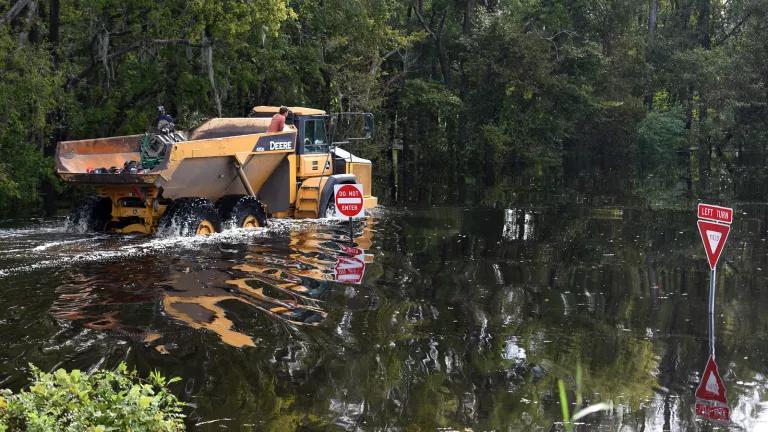This post is part of a blog series for Getting Climate Smart, a joint effort by NRDC and American Rivers to guide state action on climate and water preparedness.
Please join us for a one-hour webinar on May 14 at 3pm EDT, where we’ll provide highlights from our new guide, and state officials from California and Massachusetts will share about their climate preparedness planning and implementation experiences.
After what seems like a never-ending winter, there are many things that I’m looking forward to about the approach of summer: sunshine, warm weather, outdoor patio dining, and beach vacations. But for the millions of people who live along the Gulf and Atlantic coasts, summer also marks the beginning of hurricane season. Last year, Superstorm Sandy slammed into the northeastern seaboard, destroying lives, homes, and businesses and in the process racking up $50 billion in damage. Other major tropical cyclones included Hurricane Isaac, which made landfall in Louisiana and caused $2 billion in damage, and Tropical Storm Debby, which caused severe flooding in Florida and $250 million in damages. During the 2011 season, Hurricane Irene caused damage of nearly $16 billion in the northeast, and Tropical Storm Lee inflicted over $1 billion of damage across a large swath of the eastern U.S.
Because of the growing threats to our nation’s coastal communities from climate change, cities and states are taking charge to prepare for rising seas. Our new Getting Climate Smart guide contains hundreds of strategies to address climate threats to coastal communities and natural habitats. To illustrate measures states are putting in place to address sea level rise risks, we provide a case study of California. From developing sea level rise estimates and visualization tools for planning purposes to requiring projects to consider sea level rise implications, the state is tackling sea level rise through many avenues.
Other states also are taking action. As I’ve written about previously, Maryland Governor Martin O’Malley recently signed an executive order to reduce flooding risks to state building and public infrastructure in coastal areas. The state’s eastern neighbor, Delaware, also has comprehensively assessed vulnerability to sea level rise and solicited public input on possible preparedness strategies. The Massachusetts Legislature is considering a bill (S. 344) that would require the development of sea level rise and storm surge scenarios so that state agencies can conduct a vulnerability assessment of their assets. And a bill (A6558) in the New York State Senate would require state-funded projects to consider sea level rise and other climate change risks and require state agencies to develop model local laws to enable municipalities to plan for climate change.
Local communities are not standing on the sidelines either when it comes to preparing for climate impacts. The four Florida counties in the Southeast Florida Regional Climate Change Compact have received much recognition for their efforts to better coordinate and collaborate on climate preparedness efforts in what is one of the most vulnerable areas in the U.S. to sea level rise. Mayor Thomas Menino also is making sure that Boston is prepared. Several months ago, the mayor announced the convening of a Climate Preparedness Task Force and tasked city agencies with developing climate change preparedness design components for new development, a wetlands ordinance to protect against sea level rise and storm surge, and guidelines for better enforcement of flood-proofing standards for buildings.
These states and communities, as well as many others, recognize the severe risks that sea level rise and climate change pose to public health and safety, homes, businesses, the economy, and ecosystems. By taking action, they are tackling climate change challenges head-on. Other states and communities should take heed and follow in their proactive steps.



